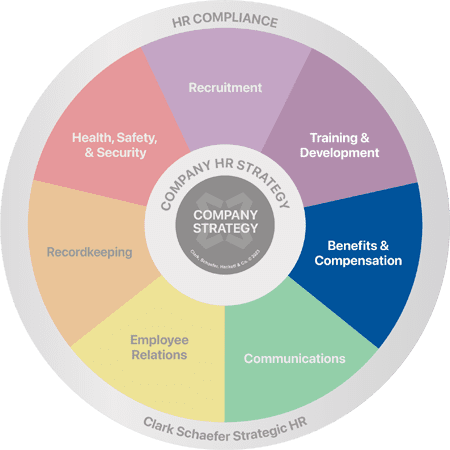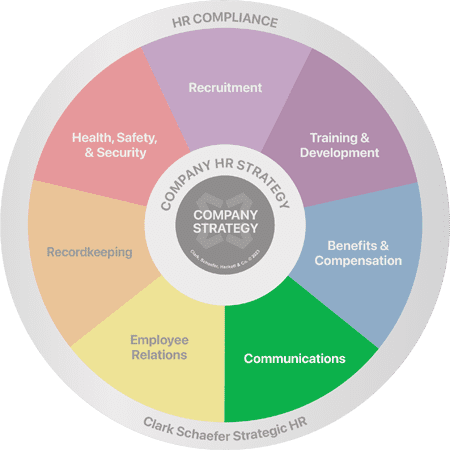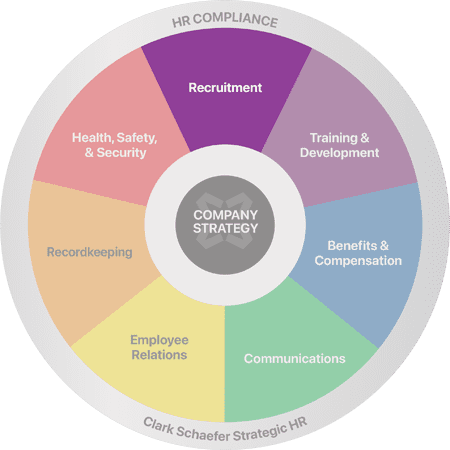Strategies for Managing Change in Your Organization
Last Updated on April 5, 2022 / HR Strategy
Change – it impacts us at work and in our personal lives. Sometimes it happens suddenly and swiftly where no pre-planning can occur. We find ourselves scrambling to process what’s happened, what it means, and how it will affect us. We are forced to pivot and determine what to do differently so “the change” becomes the “new normal.” Sometimes change is planned for; individuals and organizations create change to improve something. Whether big or small, planned change is enacted because there is a belief that it will produce a positive outcome. Unfortunately, all too often, individual reactions to change or the level of effort needed for change to be embraced is underestimated or overlooked altogether. Managing change can be difficult!
What is Change Management?
According to the Society of Human Resource Management, change management is “the systematic approach and application of knowledge, tools, and resources to deal with change. It involves defining and adopting corporate strategies, structures, procedures, and technologies to handle changes in external conditions and the business environment.”
There are a variety of models for managing change that can be applied when facing a change initiative. Some models focus on an organizational response to change, while others focus on individuals and how people respond and react to change differently. No matter the model you chose to follow, consider these tools and recommendations to smooth anticipated bumps in the road.
Organizational Response to Change
When change occurs within an organization, it’s not unusual for there to be a decline in performance, morale, or overall productivity. Employees tend to enjoy and expect a certain level of status quo. When a major change is introduced, performance drops as individuals react to the change. Even in the best of circumstances, productivity levels aren’t typically perfect right out of the gate. There may be glitches, unforeseen challenges, and learning curves that must be overcome. It takes time for the organization to adapt to the change.
Adaptation Strategies
What can be done to help an organization ‘adapt’ faster? Research shows that organizations can move from ‘adapting’ to ‘thriving’ quicker if the following occurs:
- There is regular communication and understanding of the changes occurring and desired outcomes & benefits.
- Managers are working closely with their teams and aiding throughout the change process.
- There is a focus on employee training and development; individuals are provided with the tools, knowledge, and materials to operate in the new environment.
- Individuals are given time to work through the emotional ‘roller-coaster’ that can be part of a major change.
Leadership’s Responsibility When Managing Change
According to a study conducted by the Center for Creative Leadership, they identified 9 critical leadership competencies of successful change efforts and change-capable leaders, later divided into “the 3 C’s of Change.”
- Communicate: including the “why” behind the change, rather than focusing only on “what” is changing, creates stronger buy-in and urgency for the change.
- Collaboration: leaders can increase their employees’ interest and investment in the change by including them in the decision-making process early on.
- Commit: Change can be scary but waffling back and forth on change can intimidate and confuse employees even more. By remaining resilient and dedicating themselves to change, leaders found themselves more successful during the adaptation process.
Individual Response to Change
Charlie Baker, former Vice President at Honda R&D Americas, described how individuals experience change is similar to how people experience grieving. Many are familiar with Elizabeth Kubler Ross’s stages of grief: denial, anger, bargaining, depression, and acceptance. For anyone who has gone through grief, most will tell you it’s not a linear process. The same concept applies to the change curve, which includes: denial, resistance, commitment, exploration, and commitment. For some, it may be a quick process; for others, they may linger in one stage longer than another. It’s also possible for some to travel backward through the curve if the change isn’t managed well.
Strategies to Move Toward Acceptance
What can be done to help move people to the acceptance stage of change? There are multiple activities to consider:
- If employees are in the Denial phase, supervisors should be in information mode – providing as much information as possible about the change and communicate a clear business case for why change is occurring. Management needs to “own” the change themselves and reinforce the company’s (or their own) vision for the change.
- In the Resistance phase, supervisors should be in empathy mode. To help their employees overcome resistance, supervisors need to be active listeners while allowing employees to express their feelings and thoughts and acknowledge/normalize them.
- In the Exploration phase, supervisors should be in facilitation mode. Employees need to see some specific, concrete changes – particularly those that will affect them. This may include providing new organizational charts, new tools, new metrics, or setting short-term goals to allow employees to practice operating under the changed environment and seeing immediate results & benefits. It’s important for supervisors to provide support and clear direction so employees understand what is expected of them in the future. Training, as needed, is most applicable in this phase since employees are over denial and resistance and can concentrate on learning new things.
- In the Commitment phase, employees have overcome most of the obstacles and supervisors should begin setting longer-term goals. Employees should continue to be provided with support and encouragement, but supervisors should continue to eliminate barriers and opportunities for learning. It’s important to promote and celebrate the successes that have been achieved, as well as identify and communicate any additional benefits that were not anticipated.
Throughout the change process, supervisors should be doing their best to actively support their employees in potentially difficult times. It’s also important to reinforce the “what’s in it for me” – the benefits of the change for the employees, as well as to the team and organization.
Effectively dealing with change is a critical skill area for all employees at all levels – whether you are an employee who needs to embrace change, a manager who needs to embrace and manage change, or a leader who must embrace, manage, and lead change! Having a better understanding of the challenges and using a variety of strategies to address them can greatly improve your success at managing change in your organization.
Special thanks to Terry Salo, Senior HR Consultant with Strategic HR for contributing to this edition of Emerging Issues in HR.
Now more than ever, managing change in your organization requires a coordinated, strategic approach. Strategic HR can help with your leadership and HR strategy through organizational changes – no matter how big or small. For more information, please visit our HR Strategy page, or simply contact us today!








